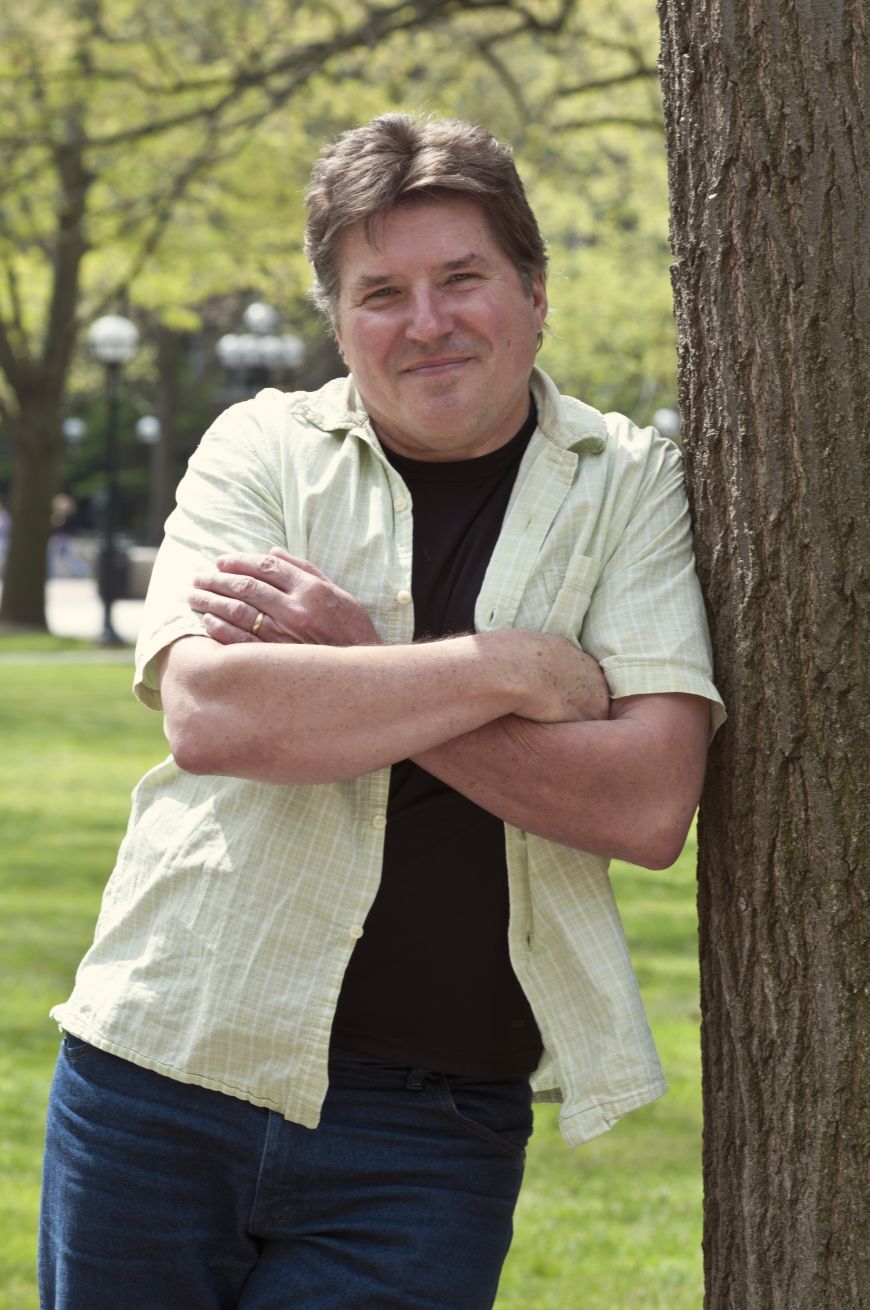
 back to all news
back to all news
10 Questions with Professor Don Zak

Don Zak is Associate Dean for Academic Affairs and a Burton V. Barnes Collegiate Professor of Ecology. His research investigates links between the composition and function of soil microbial communities and the influence of microbial activity on ecosystem-level processes. This work draws on ecology, microbiology, and biochemistry and is focused at several scales of understanding, ranging from the molecular to the ecosystem scale.
1. Hi Don. I work for the USDA Forest Service in western Montana (Missoula). I perform forest inventory and monitoring duties for research purposes. What would you say is the major ecological/microbial difference between a Montana lodgepole/ponderosa forest and a jack pine/red pine forest of northern Michigan? - Gene Fiebich, BS '99
Hey Gene! Your question is excellent because there are many ecological similarities between lodgepole pine and jack pine forests. Unfortunately, what we know about the microbial communities beneath them is still something that we do not well understand. Microbial biogeography is an emerging area of research and it demonstrates that, like plants, soil bacteria and fungi have biogeographic distributions that are shaped by dispersal limitation, habitat filtering and local extinction. Having said that, I have no clue whatsoever about what microbial species are common or exclusive to these ecosystems — that would make for a great dissertation project! Great to hear from you, and best of luck with your current work in Montana.
2. What inspired you to pursue a career in ecology?
I’m fundamentally an outside person. I was fortunate to grow up on a country road where my playground was a large track of woods. It’s just been an organic part of me since the beginning. So, when I found out you could go to college to learn how the woods worked, I was like, “Sign me up for that!”
3. How did learning “how the woods worked” lead you to the study of microorganisms in the soil?
I was initially interested in plants, and then I learned that if I really wanted to understand how plants work, I needed to learn how soil works. And to really understand how soil works, I needed to understand the ecology and physiology and biochemical characteristics of microorganisms that live in the soil—because they determine the availability of the plants.
So, that’s how I came to what I do, and it’s always been this marriage between plants and microorganisms in the soil.
4. What’s the most adventurous thing you’ve ever done?
I enjoy rock-climbing and I’ve climbed a lot of major peaks in North America. I’ve rock-climbed the Grand Teton and climbed Mt. Rainer, as well as a number of other rock climbs of mountains in the Teton Range.
5. What is the greatest piece of advice that someone ever gave you?
Have humility and question your own knowledge and assumptions.
6. Who is your biggest hero?
I don’t think I have one. I have multiple heroes that represent different facets of my life.
7. What is the most used app on your phone?
I have all kinds of ski condition apps on my phone that I use a lot during the winter.
8. What is your favorite outdoor activity?
ALL. But more specifically: mountaineering, skiing, mountain biking, hiking, backpacking. That’s who I’ve always been and it’s what I do.
9. What was your first job?
Delivering furniture out of a truck. I did it on Saturdays in high school and during the summer before I went to college.
10. When you were a little kid, what did you want to be when you grew up?
I don’t recall having any ambition about what I wanted to be when I was a little kid. I knew what I enjoyed doing, and I didn’t want to be a lawyer or doctor or a businessperson. I knew that that’s not who I am. My parents brought me up to believe that life wasn’t about money. It was about pursuing what you were interested in, and making a difference.
11. Why is it important for you to teach students out in the field?
You can’t learn ecology vicariously in the lecture hall. You have to be outside. You have to understand organisms and how they work in the environment. All of my classes right now are active place-based learning. That’s true here in Ann Arbor and also at our Rocky Mountain Field Station—where I teach part of a Field Geology and Ecology of the Rockies class.
I’ve always felt that you first need to be a good natural historian before you can be a good ecologist. That means knowing your organisms, and students really enjoy learning about that. So, all of my classes have an outside component. I simply can’t teach what I teach without being able to do that.

